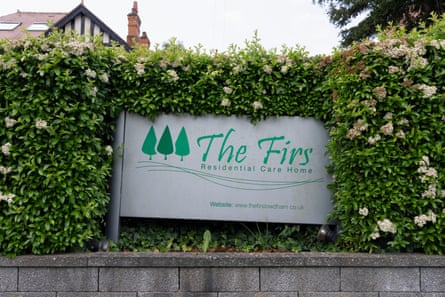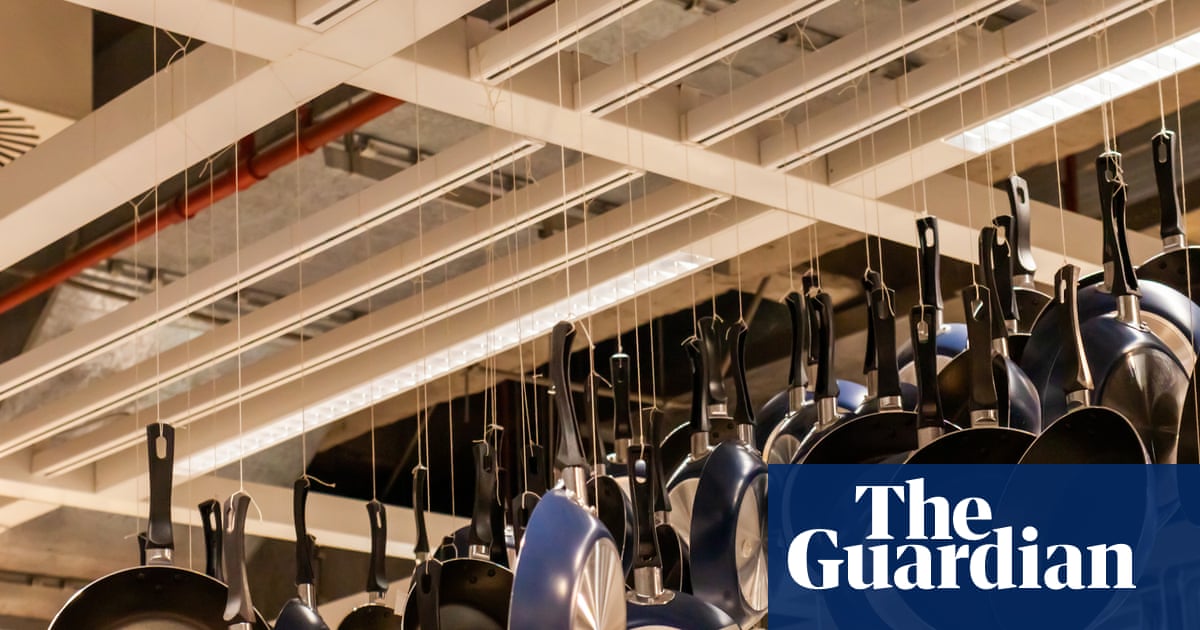“If we had known what was really going on, we’d have taken her out of there straight away,” said Greg Gillespie. “It makes you question your decision-making. But the real shame of this is we just didn’t know. It was hidden so well.”
Gillespie’s elderly grandmother lived at The Firs, a Nottinghamshire care home that was dramatically shut down by the Care Quality Commission in April due to a catalogue of shocking failures – everything from meeting nutritional and hydration needs, staffing, equipment, fire safety and governance was found to be lacking.
The CQC found people were at “serious risk of harm from overdose” due to poor medicine management, while some were at “increased risk of developing pressure sores and ulcers”, and one person was “at risk of choking from not having their immediate needs met”.
The people living in the care home, who were elderly, vulnerable or receiving end-of-life care, were evacuated in ambulances by the council into the early hours of the morning. One person who was receiving palliative care died within hours of the move.
Soon after, the home in Lowdham – which housed 11 people with dementia and physical disabilities – went into liquidation. Staff lost their jobs and have been left with wages unpaid, and many residents are owed thousands of pounds in fees – people paid from £1,250 a week to live there.
“People must be held accountable for this. I don’t think anyone who can run a home like this should be allowed to work in the care sector ever again,” said Gillespie, a corporate investigator more accustomed to turning his hand to international cases of public office bribery and fraud than care homes.
He is compiling a dossier of evidence on what went wrong at The Firs and why it took so long to act on whistleblowing complaints, which he plans to submit to his local MP and the health secretary.
“I won’t be letting the matter go, not just for my own relative and the staff who lost their jobs, but out of principle, because no one’s loved ones or their families should have to go through this,” he said. “I think this situation is so unique and appalling it needs to be looked at a higher level.”
Emma Locking’s 87-year-old grandfather, Tim, who has dementia, lived at the home. She said her family were shocked when they received a call at 5.30pm on a Friday saying the home was being shut down with immediate effect.
“Obviously my nan, at 85, was panicking, thinking: ‘Oh my God, now he’s homeless,’” she said. “It was really stressful. It’s awful for all the residents. These are people in their 80s and 90s. Some of them didn’t even have family to help. I just think the way it was all handled was disgusting.”
They had held concerns about the home for a while, particularly after Tim was left for 15 hours with an open wound on his wrist after a fall in December. His family said they were not informed of the seriousness of the injury until the next morning, when staff asked them to take him to hospital for stitches.
When they arrived to pick him up, one staff member said the wound had been “like a bloodbath”.
“I said: ‘Why the hell did no one tell us this last night?’ I would have taken him in. The wound was horrific,” she said. “He’s diabetic. He’s on blood thinners. He’s 87 years old. He could have died from that cut because he could have got sepsis. It makes you think: would he have been better off at home?”
She said her grandfather’s medication was not stored correctly and was often out of date, and he suffered two other falls at the home due to faulty or missing equipment. Her family considered raising concerns with the CQC, but worried about the repercussions for Tim while he lived there.

The CQC report on the failures at The Firs found a number of serious safety breaches. A fridge used to store medicine, including insulin and antibiotics, had been switched off for five days with no one noticing, meaning the medicine may have become ineffective.
Errors and a lack of training led to frequent overdoses – three residents received above the maximum dose of their pain relief, putting them at “serious risk of harm”. Others weren’t receiving medication regularly, including one person on end-of-life care.
People with dementia had unsupervised access to unlocked doors, leading outside to a busy road and to a retaining wall that had been taped off as it was at risk of collapse.
Fire exits were blocked, and there was no equipment to transport two people living upstairs with mobility issues down in an emergency. The home’s manager was absent for long periods of time.
The findings didn’t come as a surprise to many of the staff at The Firs, some of whom had been raising concerns for months. One care worker, who asked to remain anonymous, said in the four years they had worked there only two fire drills were carried out.
“It was scary. No one knew how to get the residents downstairs if there was a fire,” they said. “The whole time I was there, we only had two fire drills and we failed both of them – and we didn’t get more training on it.”
Another care worker, Megan O’Neill, said she had been pressed into taking on medication duties due to staff shortages, but wasn’t given proper training.
“I was just chucked into it. I didn’t really feel comfortable about it and they knew that,” she said. She claims she was unfairly dismissed when she left a shift early due to poor mental health exacerbated by the pressure of providing medication without training, and later reported her concerns to the CQC.
Another care worker said one person was given double the amount of morphine they should have received and it was simply “brushed under the carpet”.

Across the country there are concerns that increasing strain on the care home industry is leading to deteriorating levels of care, and could lead to more emergency closures.
“Seeing this CQC report, it’s horrendous, but some of it is stuff that we’re hearing quite often every day,” said Helen Wildbore, the director of Care Rights UK, which runs a national advice line for older people with care issues.
“Closed cultures and institutionalisation is on the increase. Staff don’t have the time and the resources to give personalised care. And that is having an impact on people not being able to live with dignity, basic rights being breached and relatives experiencing anxiety, more stress and unnecessary trauma.”
Staff shortages, a lack of funding and the rise in national insurance contributions were all playing their part in pushing the sector to breaking point, Wildbore said. She added that failures by the CQC, which the health secretary, Wes Streeting, described as “not fit for purpose” last year, were exacerbating the situation and leaving poor care unchecked for long periods of time.
“They’re supposed to be setting minimum standards and making sure they’re there, but they can only do that if they’re responding when people raise concerns and actually crossing that threshold to see with their own eyes what’s happening,” she said.
The Firs was previously rated “requires improvement” at its last full CQC inspection in February 2021, four years before the one that led to its closure, with many family members questioning why it took so long for it to revisit when there were known issues.
“How did it get to this? Why didn’t the CQC intervene earlier?” said Gillespie.
The Firs has been contacted for comment.
James Bullion, the CQC’s interim chief inspector of adult social care and integrated care, said: “Following an inspection in April 2025 of The Firs care home in Lowdham, we took action to suspend the registration of the home for three months following concerns we had around safety, care planning and oversight of the service.
“We have since been informed that the provider has gone into liquidation. We are considering if any further action needs to be taken. Care homes are people’s homes and everyone living there deserves to be treated with dignity and respect – and to be listened to. We will continue to hold providers to account where we find this is not the case.”

 3 months ago
120
3 months ago
120

















































